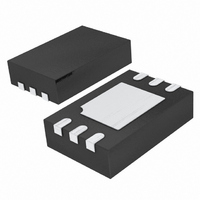LTC6908IDCB-1#TRPBF Linear Technology, LTC6908IDCB-1#TRPBF Datasheet - Page 10

LTC6908IDCB-1#TRPBF
Manufacturer Part Number
LTC6908IDCB-1#TRPBF
Description
IC OSC PREC LP RES SET 6-DFN
Manufacturer
Linear Technology
Type
Oscillator, Siliconr
Datasheet
1.LTC6908CS6-2TRPBF.pdf
(16 pages)
Specifications of LTC6908IDCB-1#TRPBF
Frequency
10MHz
Voltage - Supply
2.7 V ~ 5.5 V
Current - Supply
1.25mA
Operating Temperature
-40°C ~ 85°C
Package / Case
6-DFN
Lead Free Status / RoHS Status
Lead free / RoHS Compliant
Count
-
Available stocks
Company
Part Number
Manufacturer
Quantity
Price
APPLICATIO S I FOR ATIO
LTC6908-1/LTC6908-2
of the MOD pin. This fi ltered modulating signal may be
acceptable for many logic systems but the cycle-to-cycle
jitter issues must be considered carefully.
DRIVING SWITCHING REGULATORS
The LTC6908 is designed primarily to provide an accurate
and stable clock for switching regulator systems. The
complementary (LTC6908-1) or quadrature (LTC6908-2)
CMOS logic outputs are suitable for directly driving most
switching regulators and switching controllers. Linear
Technology has a broad line of fully integrated switching
regulators and switching regulator controllers designed
for synchronization to an external clock. All of these parts
have one pin assigned for external clock input. The no-
menclature varies depending on the part’s family history.
SYNC, PLLIN, SYNC/MODE, SHDN, EXTCLK, FCB and S/S
(shorthand for SYNC/SHDN) are examples of clock input
pin names used with Linear Technology ICs.
For the best EMC performance, the LTC6908 should be
run with the MOD pin tied to ground (SSFM enabled,
modulation rate set to f
done with strictly specifi ed bandwidths and conditions.
Modulating faster than the test bandwidth or as close to
the bandwidth as possible gives the lowest readings. The
optimal modulating rate is not as straightforward when
the goal is to lower radiated signal levels interfering with
other circuitry in the system. The modulation rate will
have to be evaluated with the specifi c system conditions
to determine the optimal rate. Depending on the specifi c
frequency synchronization method a switching regulator
employs, the modulation rate must be within the synchro-
nization capability of the regulator. Many regulators use
a phase-locked loop (PLL) for synchronization. For these
parts, the PLL loop fi lter should be designed to have suf-
fi cient capture range and bandwidth.
The frequency hopping transitions of the LTC6908 are
slowed by a lowpass fi lter. The corner frequency of this
fi lter is set to the modulation rate (f
the modulation rate divider setting, which is determined
by the state of the MOD pin. The MOD pin should be tied
10
U
OUT
U
/16). Regulatory testing is
W
OUT
/N), where N is
U
to ground for the N = 16 setting. Floating the MOD pin
selects N = 32. The MOD pin should be tied to V
N = 64 setting. This is an important feature when driving
a switching regulator. The switching regulator is itself a
servo loop with a bandwidth typically on the order of 1/10,
but can vary from 1/50 to 1/2 of the operating frequency.
When the clock frequency’s transition is within the band-
width of the switching regulator, the regulator’s output
stays in regulation. If the transition is too sharp, beyond
the bandwidth of the switching regulator, the regulator’s
output will experience a sharp jump and then settle back
into regulation. If the bandwidth of the regulator is suf-
fi ciently high, beyond f
regulation issues.
One aspect of the output voltage that will change is the
output ripple voltage. Every switching regulator has some
output ripple at the clock frequency. For most switching
regulator designs with fi xed MOSFET’s, fi xed inductor,
fi xed capacitors, the amount of ripple will vary some with
the regulators operating frequency (the main exception
being hysteretic architecture regulators). An increase in
frequency results in lower ripple and a frequency decrease
gives more ripple. This is true for static frequencies or
dynamic frequency modulated systems. If the modulating
signal was a triangle wave, the regulator’s output would
have a ripple that is amplitude modulated by the triangle
wave. This repetitive signal on the power supply could
cause system problems by mixing with other desired
signals creating distortion. Depending on the inductor
design and triangle wave frequency, it may even result
in an audible noise. The LTC6908 uses a pseudorandom
noise-like signal. On an oscilloscope, it looks essentially
noise-like of even amplitude. The signal is broadband
and any mixing issues are eliminated. Additionally, the
pseudorandom signal repeats at such a low rate that it is
well below the audible range.
The LTC6908 directly drives many switching regulators. The
LTC6908 with the spread spectrum frequency modulation
results in improved EMC performance. If the bandwidth of
the switching regulator is suffi cient, not a diffi cult require-
ment in most cases, the regulator’s regulation, effi ciency
OUT
/N, then there will not be any
+
for the
690812fa














